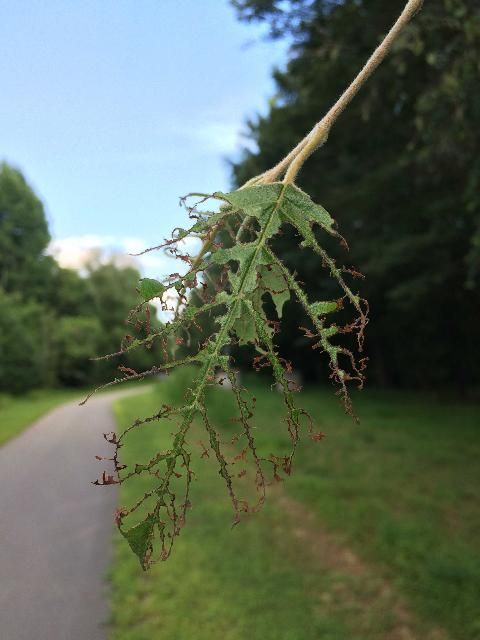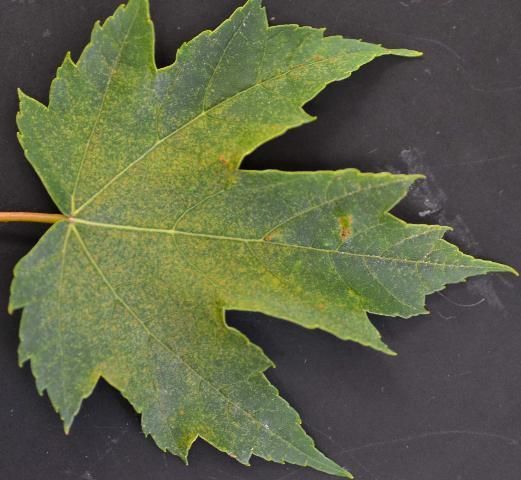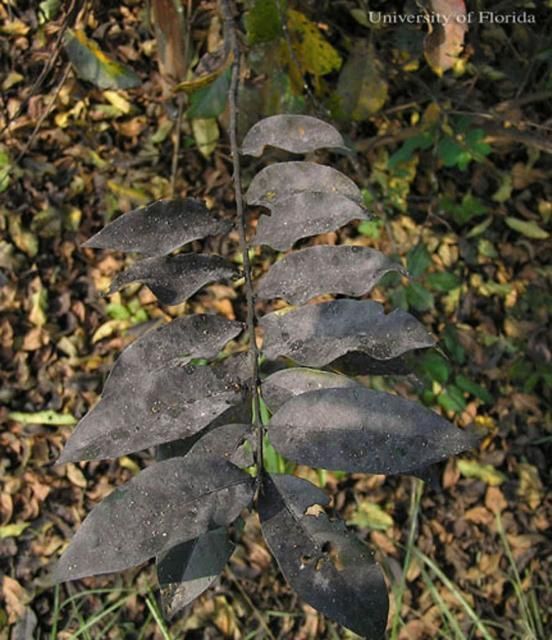This document will help Extension agents and specialists, lawn and landscape managers, Florida Master Gardeners, and homeowners develop long-term sustainable pest management programs using an Integrated Pest Management (IPM) framework.
Introduction
Every landscape manager has a pest management toolbox, which contains tools that represent different management strategies. People can be quick to use pesticides as an immediate and primary solution to pest infestations. However, an integrated approach using multiple tools can be much safer, have longer lasting beneficial effects, and in some cases cut costs.
Integrated pest management (IPM) is an informed selection and implementation of pest control measures based on their environmental, economic, and sociological consequences (Bottrell 1979). IPM has become more widely implemented in landscapes over the past several years. However, some landscape managers may avoid IPM because it can require more time and effort upfront than their current practices. Although time means money, IPM programs can substantially reduce pest management costs and risks over time when compared to using pesticides only (Raupp et al. 1992). It is increasingly important to consider the effects of selecting a management strategy based on environmental risks, societal demands, and legal consequences. The non-target effects of pesticide applications can be damaging to the environment and human health. In addition, pesticide resistance becomes an issue after insects, plant pathogens, and weeds are repeatedly exposed to the same chemical, a reoccurring problem with chinch bugs (Cherry and Nagata 2005).
To establish an effective IPM program, think of the landscape as an ecosystem. An ecosystem is a community of organisms living in a given area and the environmental conditions affecting those organisms. Landscape ecosystems may always contain pests, but they often remain below damaging levels. Attempting to control pests without considering the ecosystem of the landscape can disrupt the natural equilibrium and lead to ineffective control, secondary pest outbreaks, and higher management costs (Frank and Sadof 2011). Therefore, it is necessary to follow five general steps for a successful IPM program: pest identification, monitoring, decision-making, intervention, and evaluation.
Pest Identification
Accurate identification of the pest is essential because different pests may not be controlled by the same method. Utilize pest identification guides or contact your local UF/IFAS Extension office to help identify a pest of concern. Note the type of plant it was found feeding on as well as the observed damage. For example, chewing pests, like beetles or caterpillars, will physically remove leaf material (Figure 1). Brown or yellow speckling on leaf surfaces (Figure 2) may indicate piercing-sucking damage from pests like aphids, lace bugs, or spider mites. Secondary symptoms, like sooty mold (see Figure 3) on the tops of leaves may suggest that aphids, whiteflies, or soft scales have been feeding on leaves above. Once the pest is identified, figure out its life cycle, when it is most active, and when it is most vulnerable to control methods. Knowing the general biology of the pest is critical to the next steps of the IPM framework.

Credit: A. G. Dale

Credit: A. G. Dale

Credit: John Herbert, University of Florida
Self-help pest identification guides are available from many online sources, including the University of Florida. You can also get help from your local UF/IFAS Extension office or from the UF Insect ID Lab. Pest managers may want to invest in rapid identification guides, such as the posters and books available from the UF/IFAS Extension Bookstore. I highly recommend Insects and Related Pests of Turfgrass in Florida. The UF/IFAS Extension Bookstore also has several posters available including Insects in St. Augustinegrass Lawns, as well as Insect Pests of Oak Trees.
Monitoring
Once the pest has been identified, landscape managers must keep track of the pest's activity and location in the landscape. Monitoring is the regular inspection of plants to detect the presence of damaging pests, track the movement of those pests, and make observations. Monitoring informs the manager about what is going on in the landscape's ecosystem. Previous control measures can also be evaluated by monitoring pest populations following treatment.
The most common monitoring technique is visually inspecting plant material. Look on the undersides of leaves with a hand lens to find insects feeding or signs of feeding. If leaves have been eaten, inspect leaves below for frass (insect excrement) to determine if it was a caterpillar (Figure 4). Thrashing plant material onto a white surface can also dislodge insects for easier identification and counting. Various trapping devices can lure insects for monitoring purposes (but not as a control measure). Monitoring makes it possible for managers to locate pest-prone areas and watch for pest activity during the year.

Credit: A. G. Dale
Recording temperature, humidity, and rainfall may help to predict pest activity because insects are directly affected by their environment. Degree-day models help forecast pest development and activity based on the number of days the pests are exposed to temperatures warm enough for them to develop (Ascerno 1991). Degree-day models have been developed for some landscape pests and can be obtained from local UF/IFAS Extension offices.
Decision Making
At what level of infestation or damage is it time to intervene? One of the most difficult steps in the IPM framework is deciding when control measures are warranted. If a pest has become abundant, a decision must be made about the level of acceptable damage to the plants. In ornamental landscapes, any level of damage is often unacceptable. However, this is strongly dependent on the type of pest, the plant involved, the function of the landscape, and how much control measures will cost. Damage and aesthetic thresholds can assist with these decisions (Pedigo et al. 1986, Coffelt and Schultz 1993). Thresholds exist for some landscape pests but are still needed for many others.
It is essential to consider the timing of control measures because their efficacy can be strongly dependent on the life stage of the pest. For example, immature scale insects in the crawler stage are much more susceptible to insecticide applications than the adults (Dale and Frank 2013). Also, if the insects will soon be adults, they may stop feeding or fly away following treatment, causing the treatment to be ineffective or unnecessary.
Intervention
Once a decision to control a pest has been made, one must decide which management tool to use. Landscape IPM involves the use of multiple strategies with an emphasis on more sustainable and environmentally safe options. This typically means exploring cultural, mechanical, and biological control options first before turning to chemical control.
Cultural Control
Cultural control strategies manipulate the surrounding environment to promote plant health and minimize pest abundance. Environmental conditions directly affect a plant's ability to withstand damage caused by pests. For example, minimizing drought stress or planting tree species better suited for the local habitat can drastically reduce pest pressures (Koricheva et al. 1998). If a plant has been removed from a landscape because of pest damage, consider replanting that site with a different species that is not susceptible to the same pest. Increasing the mowing height of turf reduces stress and increases root depth, which, in turn, increase the plant's tolerance to damage (Potter et al. 1996). Supplemental nitrogen can promote plant growth, but can also accelerate insect growth and reproduction (White 1984). Fertilize lawns appropriately based on local conditions and ordinances. has information to help establish and maintain a healthy lawn in Florida.
Mechanical Control
Mechanical control strategies can also provide effective pest control without adding much to the landscape's ecosystem. Mechanical control is the management of pests by physically removing or excluding them from the plants. Hand-removal of insects can be an efficient method if insect populations are low enough. Collecting and discarding turf clippings can reduce cutworm populations by removing the egg masses that are deposited on the tips of grass blades (Williamson and Potter 1997). Although a more effective monitoring method, insect trapping with pheromone lures or sticky traps can reduce the number of flying insects. If necessary, removing infested plant material by pruning branches or removing leaves can be an effective method.
Biological Control
Populations of plant-feeding pests rarely reach damaging levels in natural habitats because those habitats are relatively undisturbed and natural enemies are able to regulate pest abundance. Thus, biological control can keep pests below levels that require additional control measures. Increasing the amount and diversity of vegetation in a landscape can increase the number of natural enemies and provide sustainable biological control (Landis et al. 2000). Augmenting natural enemy populations by purchasing and releasing insects can also provide some level of control (LeBeck and Leppla 2015), but is most effective in enclosed areas.
Many natural enemies are present in landscapes and can provide control of a wide range of pests. In turf, insects like predatory bugs, ground beetles, ants, vespid wasps, and spiders can control a broad range of pests. Pests of ornamentals have some of the same predators, as well as lady beetles (Figure 5), lacebugs, and wasps. For more information on common natural enemies of insect pests, contact your local UF/IFAS Extension office or review Natural Enemies and Biological Control,. The book Good Lawn Bugs from the UF/IFAS Extension Bookstore is also a good resource.

Credit: A. G. Dale
Chemical Control
If chemical control is necessary, select a product that is safe and effective. There are biorational insecticides derived from naturally occurring plant chemicals, bacteria, or fungi, which can effectively control pests while often being less toxic to non-pests than synthetic products (Buss and Park Brown 2014).
Most synthetic pesticides are formulated to target specific pests or pest groups, rather than a broad range of pests. This allows landscape managers to control their target pests without destroying beneficial insects. However, compounds with greater specificity may also cause problems when managers use them as broad-spectrum products. For example, imidacloprid should not be used to control spider mites because it may cause them to produce more offspring (Szczepaniec et al. 2011). Always follow the pesticide label and utilize up-to-date Extension resources (see Insect Pest Management on Turfgrass) to prevent the improper use of pesticides.
Chemical pesticides are very useful for the landscape industry and must be applied according to the label and state regulations. The label provides directions, requirements, and restrictions for the safe use of a pesticide product, along with ways to minimize environmental risks and the build-up of resistance (see Managing Insecticide and Miticide Resistance in Florida Landscapes) (Cherry and Nagata 2005). Pesticides work by contacting the pest, either directly or systemically, by entering the plant and being ingested by the pest. The soil type must also be considered when applying pesticides, as sandy Florida soils can leach nutrients and chemicals into ground water more easily than denser soils like clay. For more information on understanding a pesticide label please visit Interpreting Pesticide Label Wording.
Evaluation
The final step in an IPM program is to evaluate the management strategies that were taken by assessing their cost, efficacy, and overall value. This will help identify areas that worked well or need improvement. An effective IPM program is continuously evolving to address old and new challenges in landscape pest management.
Summary
Managing landscape pests is a dynamic challenge that requires managers to constantly adapt. Implementing IPM can buffer a management program from new challenges because it is working on several fronts. IPM is becoming more important in Florida landscapes as issues like water quantity and quality, population growth, pollinator health, and pesticide and fertilizer regulations intensify. For recommendations on best management practices for lawns, please visit Homeowner Best Management Practices for the Home Lawn.
In addition, several landscape IPM training courses and programs are available through UF/IFAS. Pest Management University (PMU) offers lawn and ornamental pest management courses. The web-based courses, Landscape IPM: Ornamentals and Turf (IPM4254) and Turf and Ornamental Entomology (ENY3510/ENY5516) are offered through the UF/IFAS Department of Entomology and Nematology.
Selected References
Ascerno, M. E. 1991. "Insect phenology and integrated pest management." Journal of Arboriculture 17:13015. https://doi.org/10.48044/jauf.1991.003
Bottrell, D. G. 1979. Integrated Pest Management. U.S. Government Printing Office.
Buss, E.A. and Park Brown, S.G. 2014. Natural Products for Managing Landscape and Garden Pests in Florida. ENY-350. Gainesville: University of Florida Institute of Food and Agricultural Sciences. https://edis.ifas.ufl.edu/in197 https://doi.org/10.32473/edis-in197-2014
Cherry, R. and R. Nagata. 2005. "Development of resistance in Southern Chinch Bugs (Hemiptera: Lygaeidae) to the insecticide Bifenthrin." The Florida Entomologist 88:219–221. https://doi.org/10.1653/0015-4040(2005)088[0219:DORISC]2.0.CO;2
Coffelt, M. A. and P. B. Schultz. 1993. "Quantification of an aesthetic injury level and threshold for an urban pest management program against orangestriped oakworm (Lepidoptera: Saturniidae)." Journal of Economic Entomology 86:1512–1515. https://doi.org/10.1093/jee/86.5.1512
Dale, A. G., and S. D. Frank. 2013. Take arms against armored scale. Nursery Management. GIE Media, Inc.
Frank, S. D. and C. S. Sadof. 2011. "Reducing Insecticide Volume and Nontarget Effects of Ambrosia Beetle Management in Nurseries." Journal of Economic Entomology 104:1960–1968. https://doi.org/10.1603/EC11124
Koricheva, J., S. Larsson, and E. Haukioja. 1998. "Insect performance on experimentally stressed woody plants: A meta-analysis." Annual Review of Entomology 43:195–216. https://doi.org/10.1146/annurev.ento.43.1.195
Landis, D. A., S. D. Wratten, and G. M. Gurr. 2000. "Habitat management to conserve natural enemies of arthropod pests in agriculture." Annual Review of Entomology 45:175–201. https://doi.org/10.1146/annurev.ento.45.1.175
Larson, J. L., C.T. Redmond, and D.A. Potter. 2013. "Assessing insecticide hazard to bumble bees foraging on flowering weeds in treated lawns." PLoS ONE 8(6): e66375. https://doi.org/10.1371/journal.pone.0066375
LeBeck, L. M. and N.C. Leppla. 2015. Guidelines for purchasing and using commercial natural enemies and biopesticides in North America. IPM-146. Gainesville: University of Florida Institute of Food and Agricultural Sciences. https://edis.ifas.ufl.edu/in849. https://doi.org/10.32473/edis-in849-2015
Pedigo, L. P., S. H. Hutchins, and L. G. Higley. 1986. "Economic injury levels in theory and practice." Annual Review of Entomology 31:341–368. https://doi.org/10.1146/annurev.en.31.010186.002013
Potter, D. A., A. J. Powell, P. G. Spicer, and D. W. Williams. 1996. "Cultrual practices affect root-feeding white grubs (Coleoptera: Scarabaeidae) in turfgrass." Journal of Economic Entomology 89:156–164. https://doi.org/10.1093/jee/89.1.156
Raupp, M. J., C. S. Koehler, and J. A. Davidson. 1992. "Advances in implementing integrated pest management for woody landscape plants." Annual Review of Entomology 37:561–585. https://doi.org/10.1146/annurev.en.37.010192.003021
Szczepaniec, A., S. F. Creary, K. L. Laskowski, J. P. Nyrop, and M. J. Raupp. 2011. "Neonicotinoid insecticide imidacloprid causes outbreaks of spider mites on elm trees in urban landscapes." PLoS One 6:e20018. https://doi.org/10.1371/journal.pone.0020018
White, T. C. R. 1984. "The abundance of invertebrate herbivores in relation to the availability of nitrogen in stressed food plants." Oecologia 63:90–105. https://doi.org/10.1007/BF00379790
Williamson, R. C. and D.A. Potter. 1997. "Oviposition of black cutworm (Lepidoptera: Noctuidae) on creeping bentgrass putting greens and removal of eggs by mowing." Journal of Economic Entomology 90(2): 590–594. https://doi.org/10.1093/jee/90.2.590